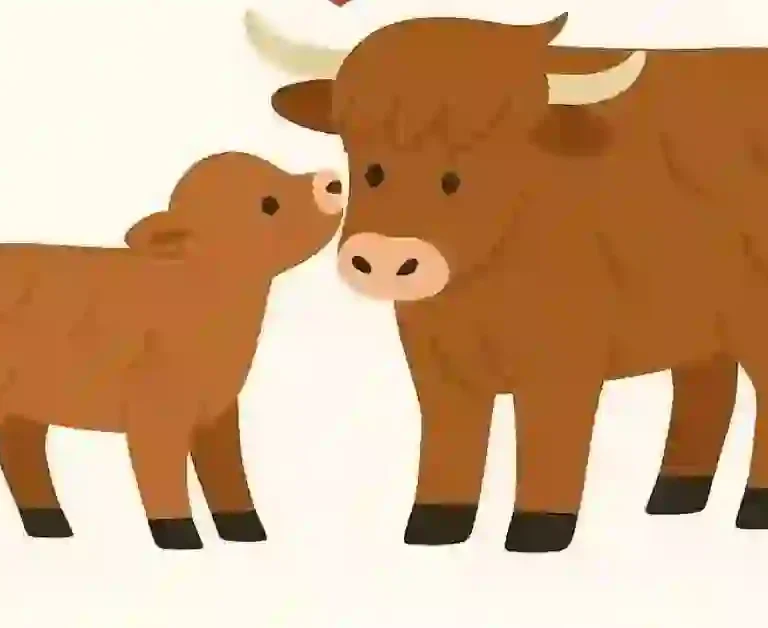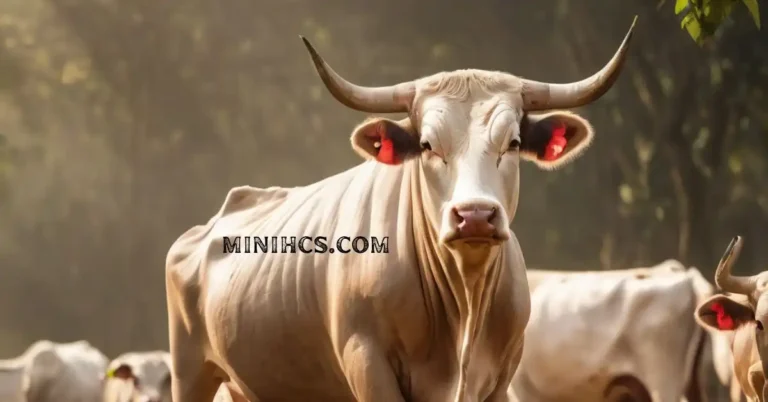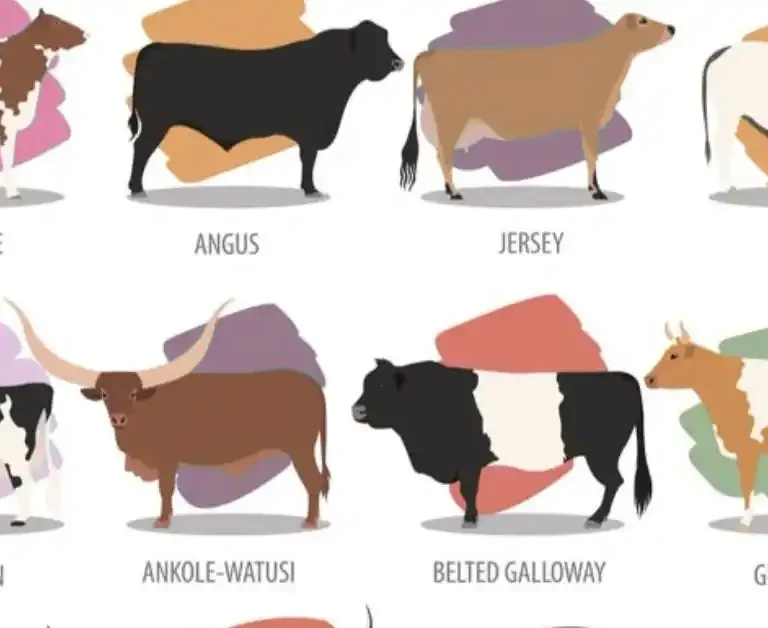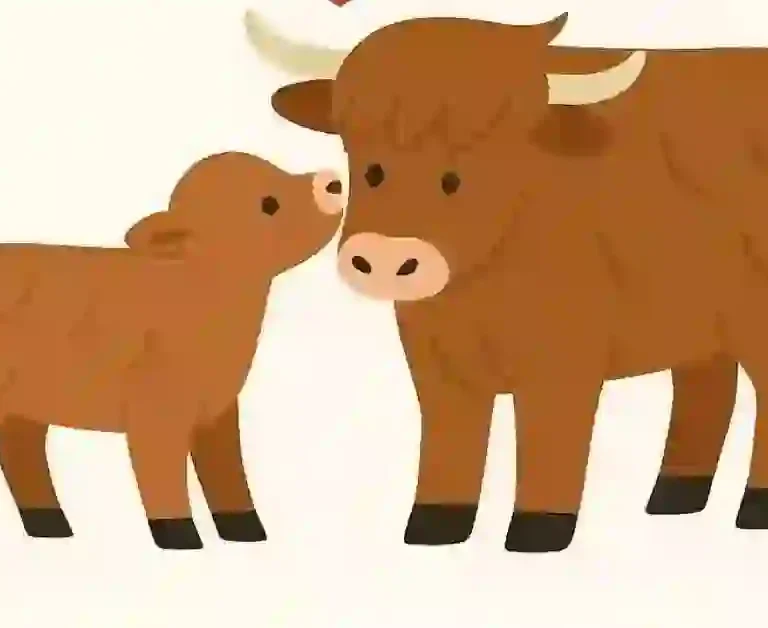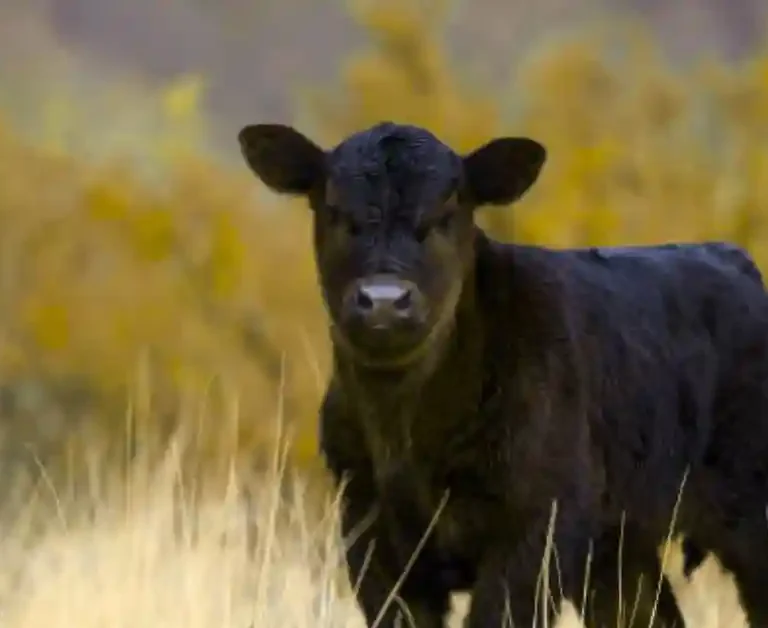Brahman Cow Breed: Origin, History, Traits & Interesting Facts

The Brahman cow stands tall in the vast tapestry of bovine diversity. It is a symbol of cultural reverence, adaptability, and historical significance. We are embarking on a journey to explore the facets of the Brahman cow.
We will unravel the threads that tie it to ancient traditions, contemporary farming, and the hearts of those who hold it sacred.
Origin of Brahman cattle breed
Geographical Origin
The roots of the Brahman cow trace back to the Indian subcontinent, where its journey began amidst the region’s diverse landscapes. This sacred bovine species goes beyond geographical boundaries with time, making its mark globally.
The scientific name of the Brahman cow is Bos indicus. People mostly liked the Guzert strain of Brahman cattle because it was similar to the ones they were already raising in the country. They also brought in the Krishna Valley strain, which was used sparingly. So, cattle farmers preferred the Guzert type.
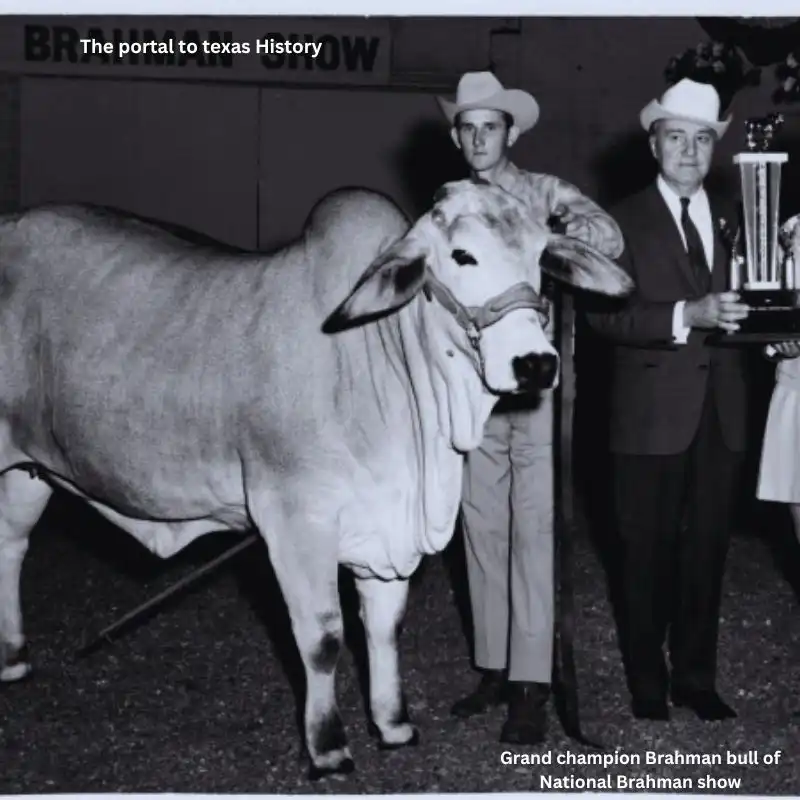
The historical journey of Brahman cows is a witness to their flexibility and adaptability. Brahman cows have carved a path through history, leaving a stubborn mark on various cultures. They’ve done so from India’s ancient landscapes to different continents’ expansive fields.
History
Ancient References
References to Brahman cows can be found in ancient texts, showcasing their enduring presence in the annals of history. The reverence for these creatures extends through the millennia. It portrays a deep connection between humans and these gentle beings.
Brahman Cows in Hinduism
In Hinduism, Brahman cows hold a sacred status, entwined with religious practices and beliefs. Their mention in holy scriptures underscores their divine significance. This elevates them to a symbol of purity and auspiciousness.
Types of Brahman Cows
American Brahman cattle

Indian cattle were first brought to the United States in 1849 from South Carolina. He got them while working as an agricultural advisor in Turkey. These cattle were widely spread in the South, but their identity was lost during the Civil War. 1854 Richard Barrow of Louisiana got two Indian bulls from the British Crown.
Their descendants became known as “Barrow Grade” cattle. In 1885, two more Indian bulls were imported to Texas by J.M. Frost and Albert Montgomery. They were bred with Barrow bulls’ offspring to concentrate the Bos indicus blood.
Circuses also imported some Indian cattle and brought desirable ones. A famous case was A.M. McFaddin’s acquisition of a red Brahman bull named “Prince” in 1904. In 1905-1906, the Pierce Ranch in Texas imported thirty bulls and three females of various Indian types.
In 1923-24, 90 bulls of Guzerat, Gir, and Nellore types were imported from Brazil, followed by another shipment in 1925. In 1946, eighteen Brazilian bulls were brought to Texas via Mexico.
Indian Brahman
The Indian Brahman breed is a cattle of India. It is a majestic creature with a hump like a mountain and eyes that hold the wisdom of ages.
It is far more than just a cattle breed. It’s a symbol woven into the very fabric of Hindu culture, revered for its gentle nature, resilience, and connection to the divine. The distinctive hump is a storehouse of energy and a mark of divine favour.
It is often adorned with colourful markings during festivals.
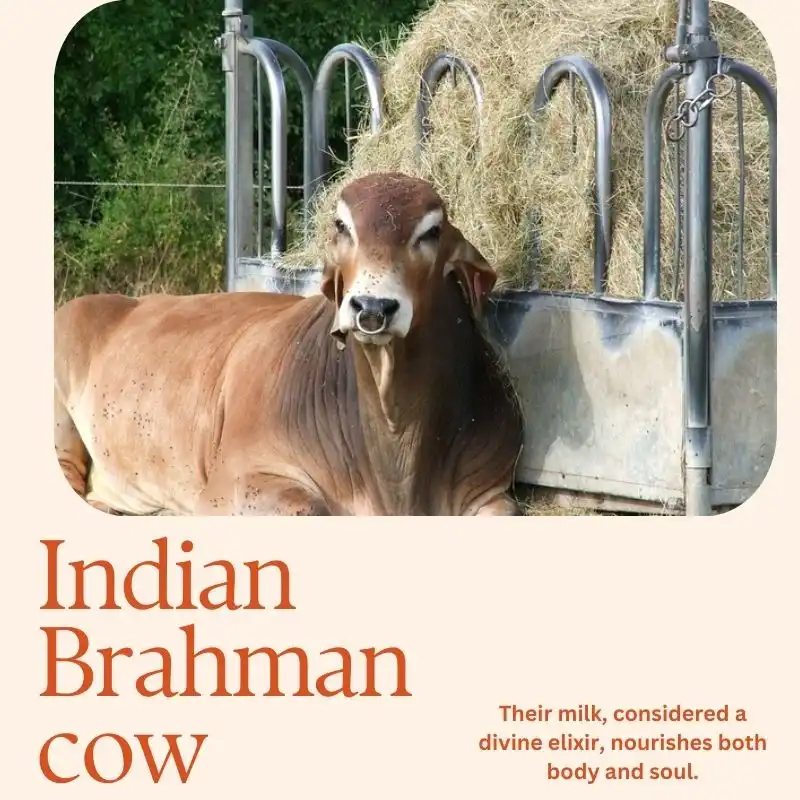
This transforms the animal into a living embodiment of blessings. In temples and villages, Brahmans graze freely. Their calm presence is a reminder of ahimsa (non-violence) and the sacredness of all life.
Their milk, considered a divine elixir, nourishes both body and soul. Their dung finds use in purifying rituals and enriching the land. From the verdant fields to the bustling streets, the Indian Brahman is a silent guardian. It’s a witness to the enduring bond between humanity and nature in the heart of India.
Other Varieties
In addition to American and Indian cattle, different regions have embraced Brahman cows. They have developed various subtypes. Each variety carries its unique characteristics. This contributes to the overall diversity of Brahman cattle and beef production.
Brahman cow hump

The large hump over the top of a Brahman cow, perched proudly on its shoulders, is more than just a distinctive feature. It’s a marvel of adaptation. This fatty deposit acts as a built-in energy reserve. It stores dietary and water like a camel’s hump, helping the cow grow in harsh climates where food and water might be in short supply.
During dry periods, the cow can tap into this water supply, ensuring its survival and the ability to continue looking after its calves. So, while it may appear like just a lump, the Brahman’s hump is a badge of resilience. This breed’s remarkable ability to overcome challenges is a testament. It thrives in even the most unforgiving environments.
Facts About Brahman Cow
Cultural Significance of European Cattle

Beyond its economic importance, the Brahman cow is significant in various cultures. In Hinduism, it is revered as a symbol of purity. It often participates in religious ceremonies and festivals, embodying spiritual significance.
Economic Importance of Beef Cattle
Brahman cows contribute significantly to the agricultural and economic landscape. They are known for their meat quality, milk production, and genetic contributions to crossbreeding. They play a multifaceted role in sustaining livelihoods and enhancing farming practices.
Two breeds make Brahman cow.
The Brahman cow is unique, not produced by breeding two specific breeds. The development of the Brahman breed originated from Bos indicus cattle from India to the Americas in the 19th century. These Brahma cattle were known for their hardiness and adaptability to hot, humid climates.
Many cattle from this breed were raised in the southwestern United States and Latin America. They were ideal for ranching in the Southern United States and Latin America. Several strains of Bos indicus cattle were imported and crossbred, primarily the Guzerat, Nellore, and Gir breeds.
Guzerat
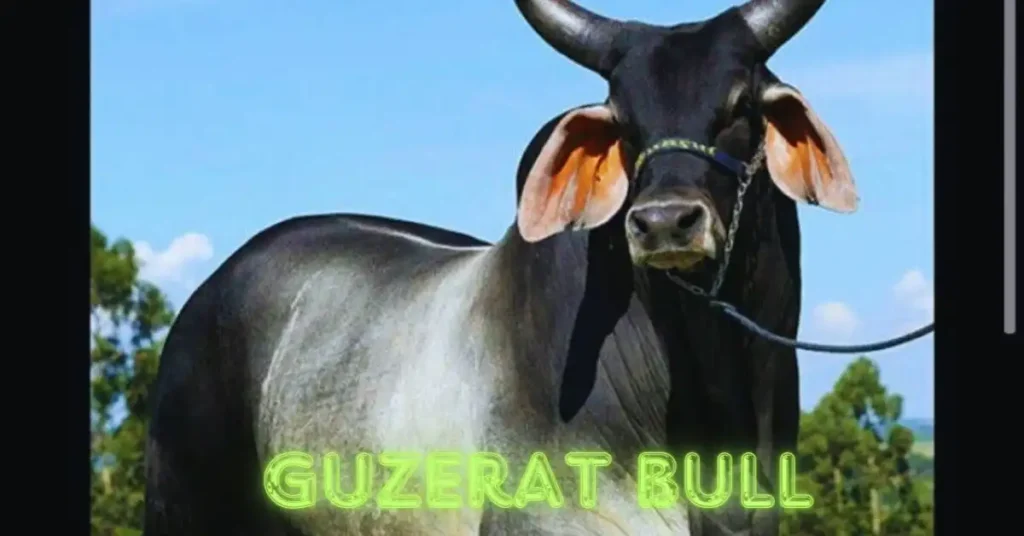
Guzerat is a breed of cattle from the Indian state of Gujarat. It is famous for its adaptability and economic importance. The Guzerat breed is recognized for its distinctive hump, long ears, and a sleek, compact body. It has made a mark in various agricultural settings.
These cattle have a history deeply rooted in India. They have gained global recognition for their resilience, especially in tropical climates. Guzerat cattle are valued for meat and milk production. They have played a key role in sustainable farming practices and genetic variation in cattle breeding.
Nellore
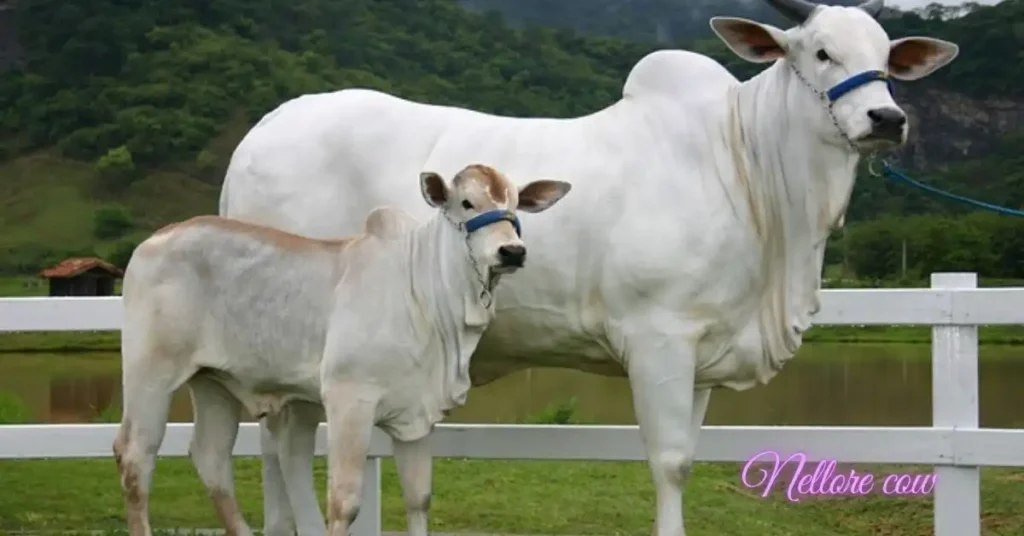
Nellore cattle sleet from the Nellore district in the Indian state of Andhra Pradesh. They are famous for their validity and adaptability. Identifiable by their definite white or light grey coats, these cattle reveal a sleek and muscular physique. Nellore cattle are praised for their impressive heat tolerance and flexibility.
This makes them well-suited for tropical climates. They are highly valued in the beef industry. They are often used for meat production because they have excellent feed conversion efficiency. They can thrive in challenging environmental conditions. The breed’s genetic traits and hardiness contribute to its popularity within India and globally. Nellore cattle are significant in agriculture and cattle farming.
Gir
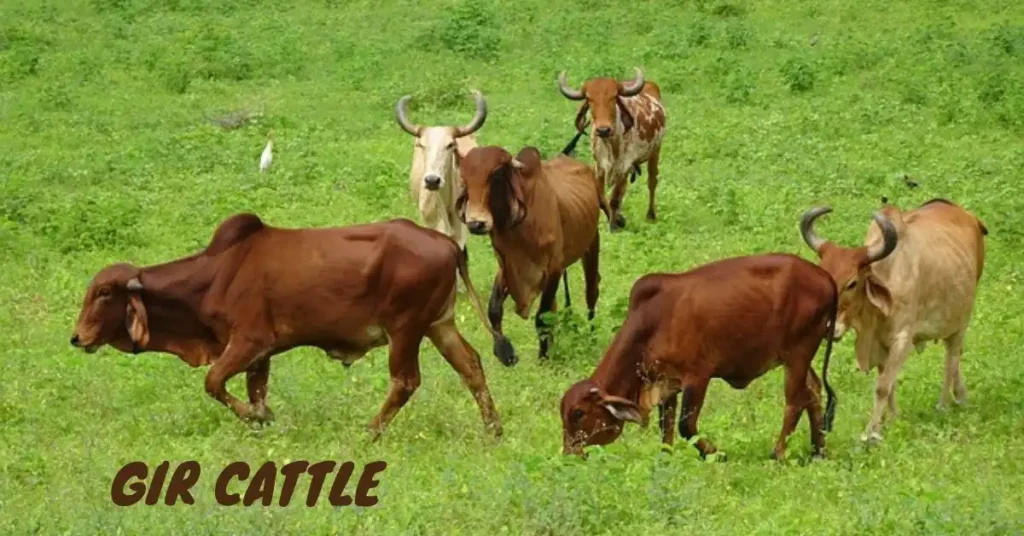
The Gir breed originates in the Gir forest region in Gujarat, India. It is known for its unique appearance and unusual milk production. Gir cattle are known for their striking reddish-brown coat and prominent hump. They have become a symbol of India’s rich cultural and farming heritage.
These cattle are highly sought after for their high-quality milk, rich in fat and ideal for dairy production. The Gir breed has gained international recognition. Efforts are made to conserve and promote its unique genetic traits.
Gir cattle have a gentle disposition and adapt to various climates. They continue to make a notable impact on the global dairy industry. They are a source of pride for cattle fanatics and farmers alike.
Advantages & Disadvantages of Brahman Cow
Advantage
| Brahman cows are highly adaptable to diverse climates. This makes them strong in various environmental conditions. |
| Brahman cows are known for their robust immune systems. They keep from many common diseases, reducing the need for extensive veterinary care. |
| Efficient Grazers: Brahman cows thrive on lower-quality forage. This is advantageous in areas with limited access to high-quality feed. |
| Brahman cows have relatively easy calving. This reduces complications during the birthing process. |
| Hybrid vigour occurs when Brahman genetics are used in crossbreeding programs. This enhances traits like disease resistance and adaptability. |
| Brahman cattle excel in heat tolerance. They are well-suited for hot and subtropic climates. |
| Continuity: Brahman cows often have lengthy productive lifespans, given to sustainable breeding programs. |
Disadvantage
| Brahman cattle tend to mature more slowly than other breeds, it takes to reach market weight. |
| Some Brahman cattle may exhibit temperamental behaviour. Skilled handling and management are needed to ensure safety. |
| Their milk production is comparatively lower than that of specialized dairy breeds. |
| Brahman cattle may not match the rapid growth rates of some other breeds. Intensive farming systems prioritize rapid growth. |
| In some markets, Brahman cattle may face challenges in acceptance. This is due to specific preferences for other breeds. |
| Brahman beef is liable to have less intramuscular fat, resulting in beginner meat. However, some may perceive it as having less marbling. |
| In regions unfamiliar with Brahman cattle, people might doubt or not know about their benefits. |
Lifespan
The Brahman cow, known for its heat and pest tolerance, also boasts an impressive lifespan. These gentle giants regularly outlive other beef cattle, reaching 15-20 years and even birthing calves in their teens! Their robust genetics, adaptability, and strong immune system contribute to this longevity.
Their calm temperament also helps. This increases productivity and sustainability for ranchers. It reduces the need for replacements, benefiting the environment. So, next time you see a Brahman, remember its enduring strength and contribution to a harmonious relationship with nature.
Conclusion
In conclusion, the Brahman cow is a heifer species. It is also an overpass between tradition and modernity, immortal and feasibility. Its journey through history, diverse types, and noteworthy facts weave a narrative of significance. This narrative transcends geographical boundaries.
